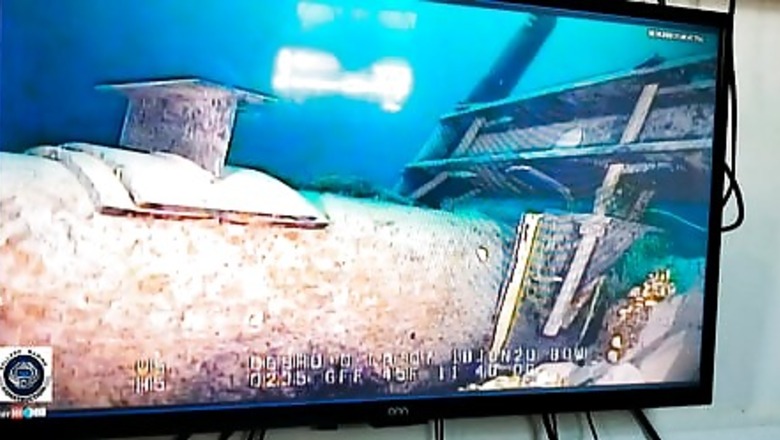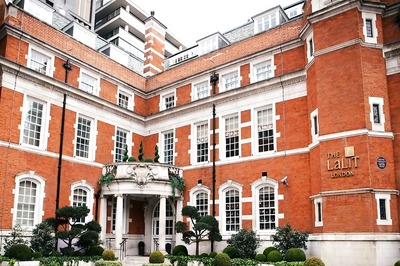
views
TRAVERSE CITY, Mich.: Enbridge’s plans for drilling an oil pipeline tunnel beneath a channel linking two of the Great Lakes do not meet industry standards and pose significant hazards to workers and the environment, experts who reviewed project documents on behalf of opposition groups told The Associated Press.
Two geologists and a hazardous waste specialist said they found numerous shortcomings with the Canadian company’s proposals to the Michigan Department of Environment, Great Lakes and Energy, which is considering whether to allow construction of the tunnel under the Straits of Mackinac.
What Enbridge has submitted to the state of Michigan doesnt come close to properly designing and preparing for a tunnel underwater, said Brian OMara, a geological engineer who has worked on dozens of tunnel projects.
The analysis was requested by Oil & Water Don’t Mix, a coalition of environmental, business and tribal organizations. They are fighting to shut down Line 5, an Enbridge pipeline that crosses the bottom of the waterway connecting Lake Michigan and Lake Huron.
Enbridge spokesman Ryan Duffy said the tunnel plans were developed in consultation with experienced geologists and engineers.
Jay Dee Contractors Inc. and the U.S. affiliate of Japanese tunnel construction firm Obayashi Corp. are constructing the tunnel. Arup, an engineering and consulting firm, is helping with design.
Jay Dee and Obayashi have a collective track record of constructing more than 400 pressurized-face tunnels consisting of more than 2.4 million feet (about 732,000 meters) of tunnelway, Duffy said. A number of those projects involved high pressure and ground condition parameters similar to those that will exist in the Straits of Mackinac.
The company contends the 67-year-old Line 5 that runs between Superior, Wisconsin, and Sarnia, Ontario, is in good condition but wants to replace the 4-mile-long (6.4-kilometer-long) underwater segment with another to be housed in a nearby subterranean tunnel. Enbridge says it would pay the estimated $500 million cost.
Opponents planned to release their reviewers’ findings at a news conference Monday.
A summary provided to AP said the tunnel plans had changed considerably since a 2017 assessment, which described the project as feasible and low-risk. That analysis by a Canadian firm was based on assumptions that have proven incorrect, O’Mara said.
It presumed the tunnel would be located entirely in solid bedrock, yet Enbridge’s plan also includes digging through poor bedrock, soft silts and clay, O’Mara said.
Limestone and dolomite formations beneath the waterway connecting Lake Huron and Lake Michigan are complex jumbles that can change drastically and suddenly, he said. Without adequate data on rock conditions, fault zones and groundwater pressure, a tunnel boring machine can break down, forcing expensive repairs and delays, he said.
For that reason, tunnel designers usually extract samples every 50 to 200 feet (15 to 61 meters), he said. Yet, Enbridges contractor took them once every 950 feet (289.5 meters).
They have done just a fraction of what you would expect on a project of this size and magnitude,” O’Mara said.
Enbridge is confident in its geological analysis and considers conditions favorable for the tunnel projects, Duffy said. As our geologists and engineers gather more information from studying the cores, we will continue to enhance knowledge about the rock and soil conditions.”
O’Mara said the risk analysis also presumed that the tunnel interior around the pipeline would be filled completely with cement to prevent leaks and collapse, but that feature is absent from the current plan.
This single design change represents the greatest risk and would make a catastrophic disaster much more likely to occur, O’Mara said.
The Enbridge plan also has no provisions for dealing with toxic methane that has been found in the areas groundwater, which the risk analysis assumed wouldnt be present, he said.
O’Mara said the proposed tunnel’s V-shaped design configuration would endanger workers by putting the deepest point in the middle of the straits.
Another threat is posed by a slurry that would be injected during construction to keep the tunnel stable and lubricated, said Mike Wilczynski, a retired former senior geologist with the state Department of Environmental Quality, now known as EGLE. The mud consists of water, additives and bentonite clay.
Plans call for piping the mud to the surface, removing the clay and discharging up to 5 million gallons (18.9 million liters) of treated wastewater back to the straits, he said, but the permit application doesn’t show how the lakes would be protected from accidental releases.
A bentonite spill could be more environmentally damaging than oil, which floats on the surface and can be recovered, Wilczynki said.
Bentonite can stick to everything it touches and forms an impermeable barrier” that can smother fish and bottom-dwelling invertebrates that are essential for food chains, he said.
Duffy said slurry and water would be piped to settling ponds for treatment and water would be cleansed to meet state standards before discharge back into the straits.
The state environment department is scheduled to conduct the first of several public hearings Tuesday on wastewater treatment and wetlands permits that Enbridge needs to move forward. The department plans to issue rulings by the end of the year.
Spokesman Nick Assendelft said department staffers would consider the findings of the Oil & Water Don’t Mix reviewers along with other public comments.
The state also has retained tunneling experts as consultants and will explore if others are needed to help evaluate technical information that is part of the public record,” Assendelft said.
Disclaimer: This post has been auto-published from an agency feed without any modifications to the text and has not been reviewed by an editor




















Comments
0 comment